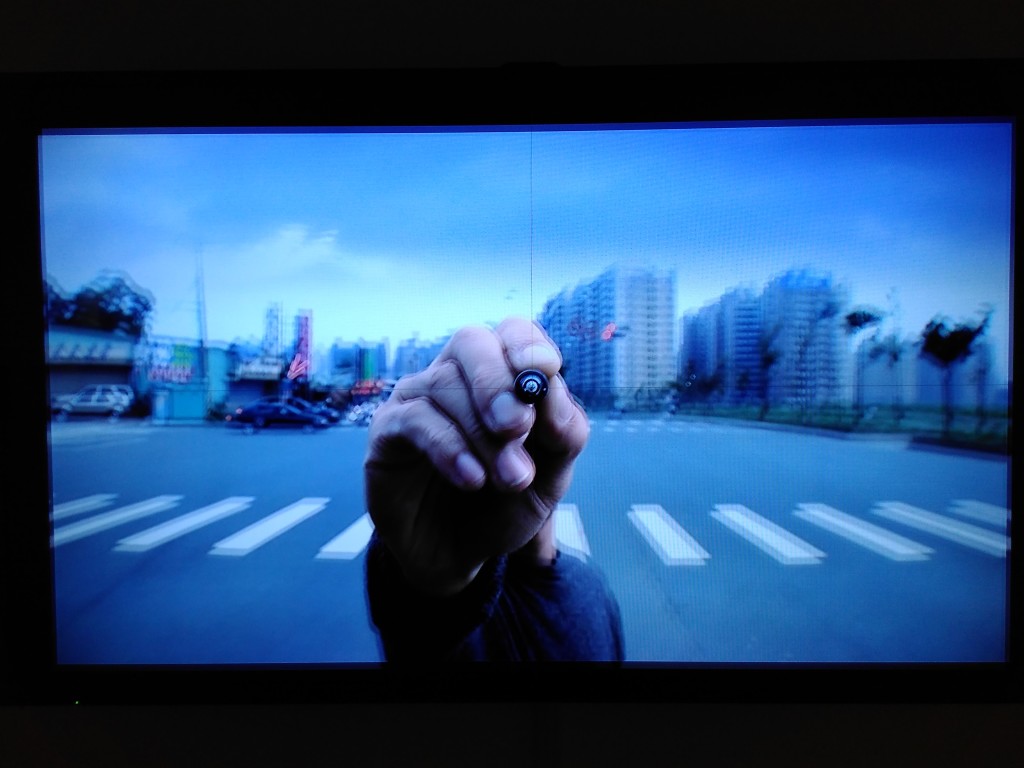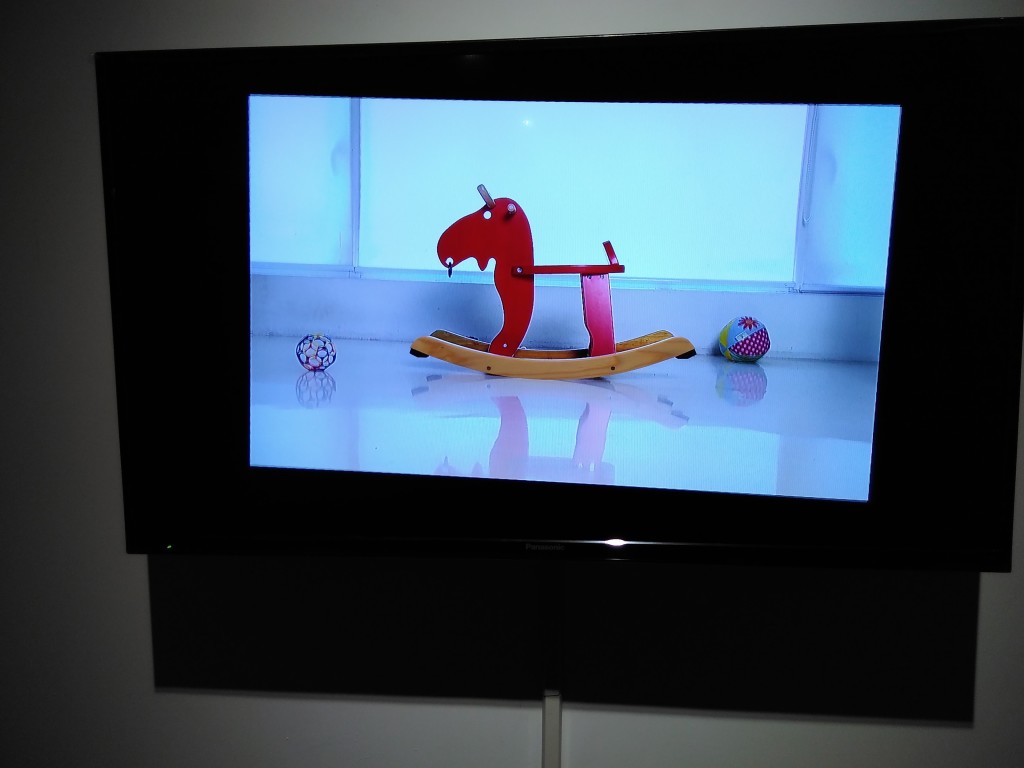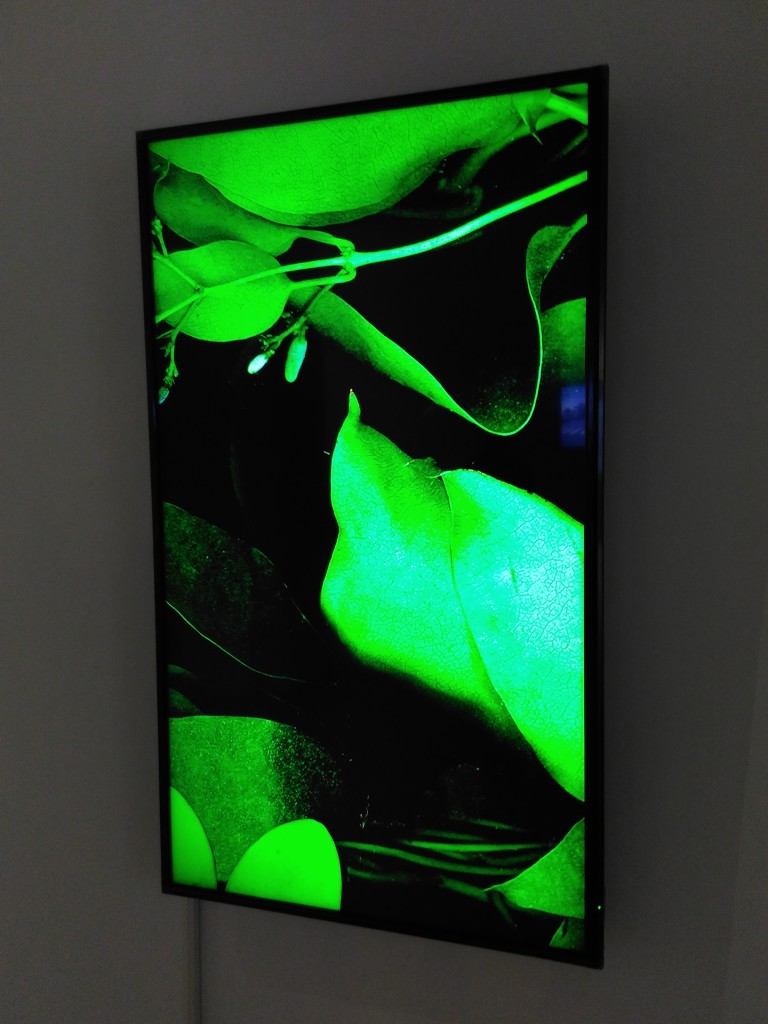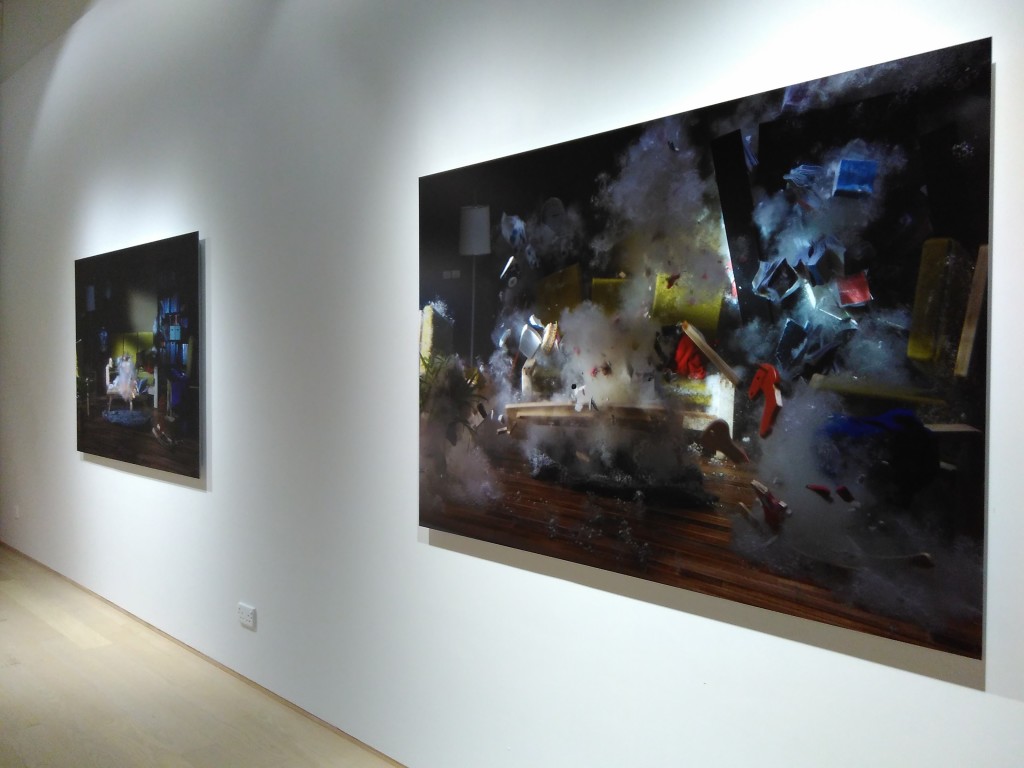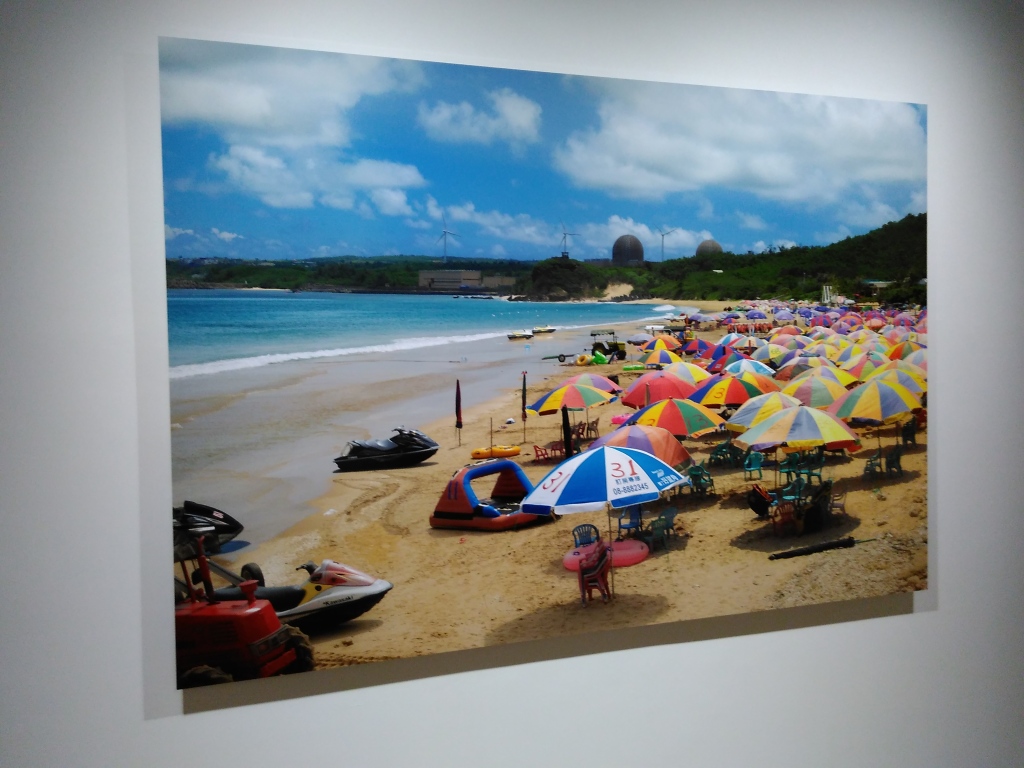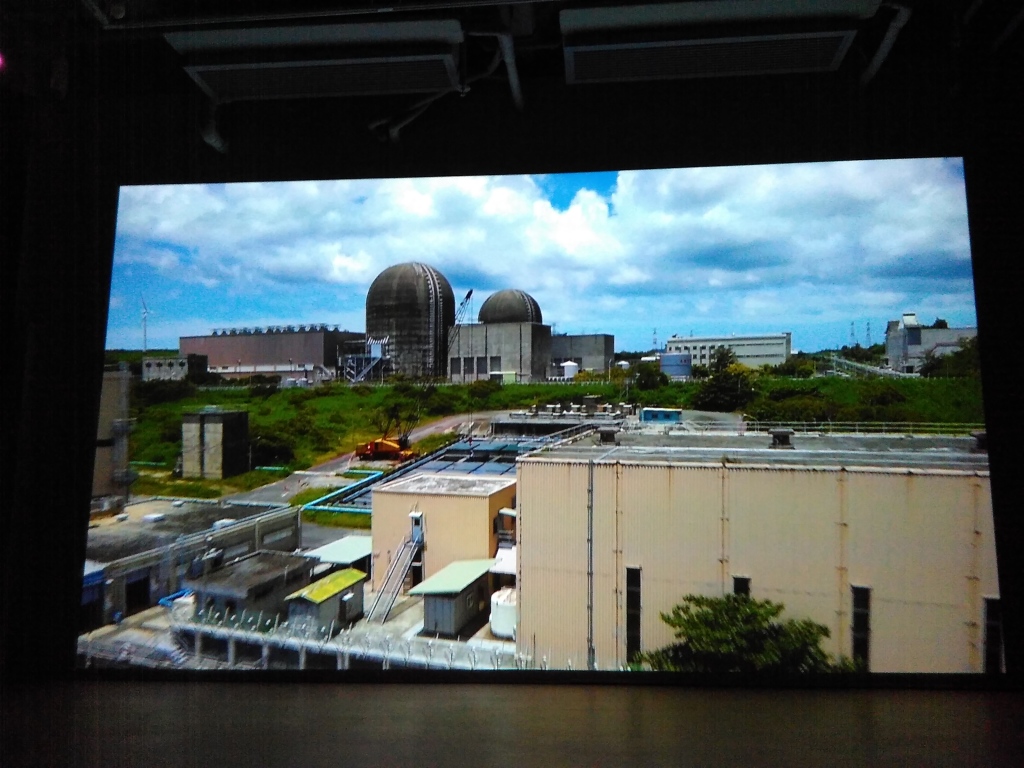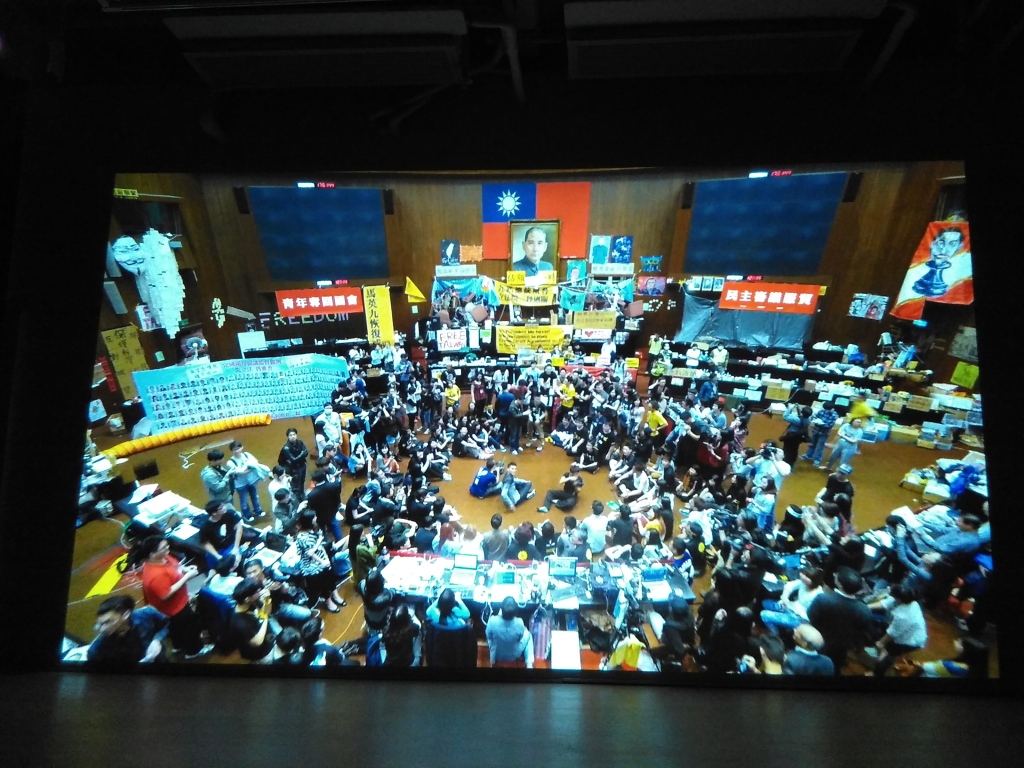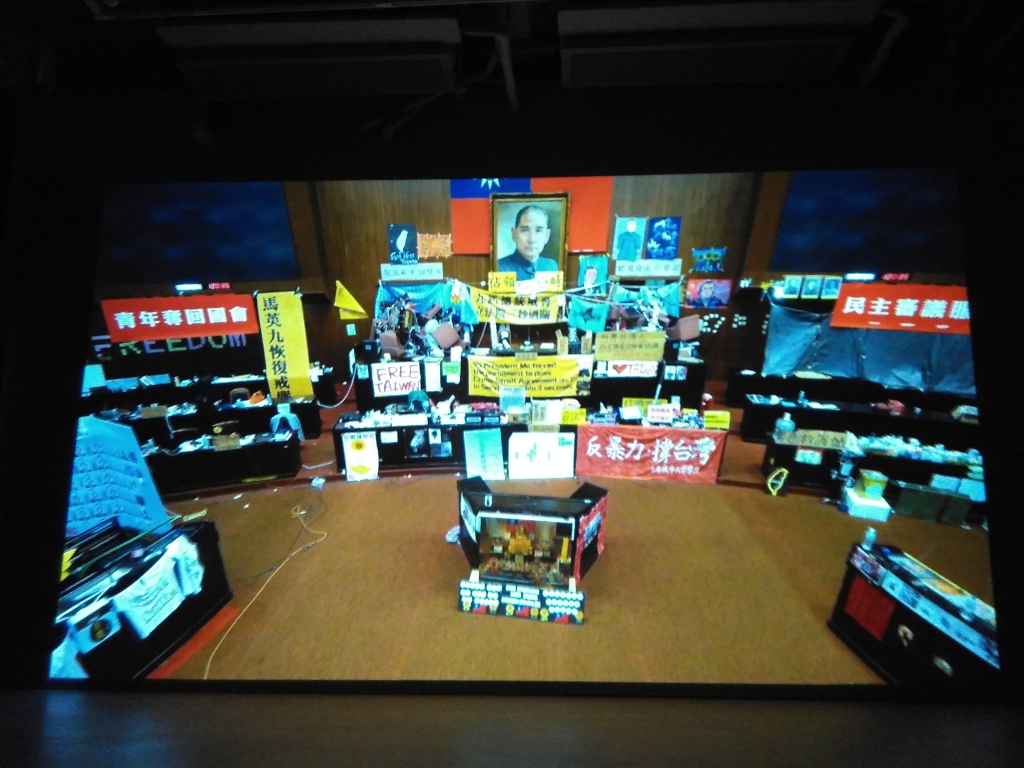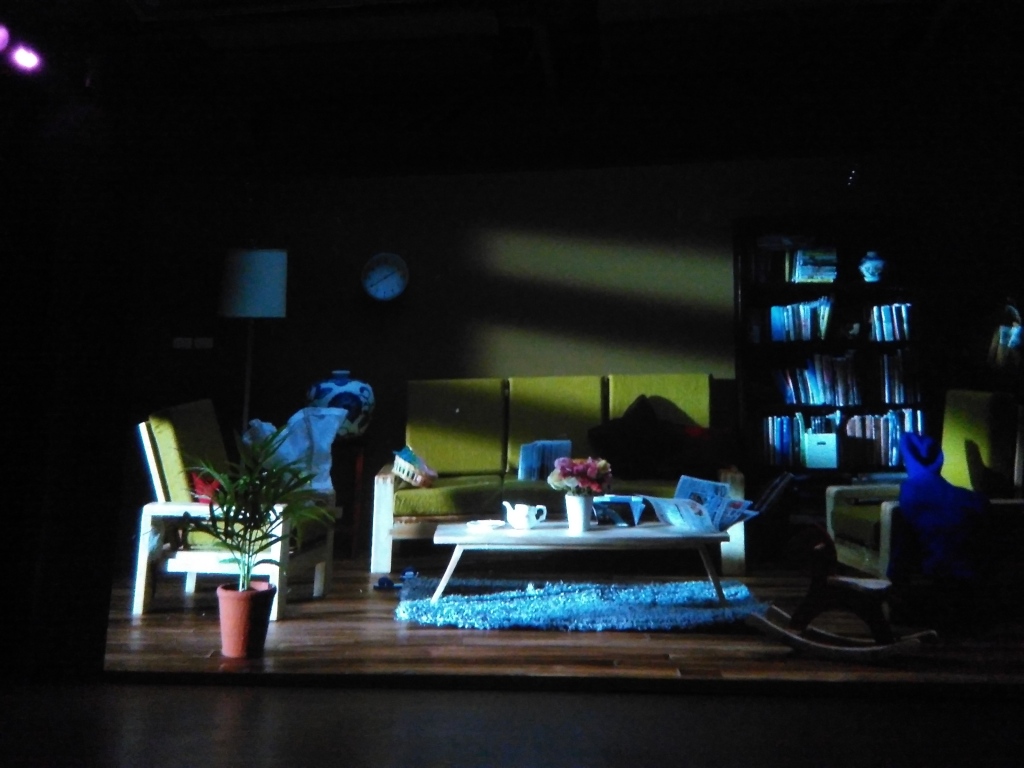Hong Kong, September 18 – October 17, 2015, Hong Kong, https://www.facebook.com/Hanart.TZ.Gallery Curator: Valerie C. Doran.
Hanart TZ Gallery recently focused mainly on Chinese ink painting, plus some western-style paintings by artists of greater China origins. A video-art exhibition of Yuan Goang Ming, one of the founders of Taiwanese video was quite a surprising turn of events.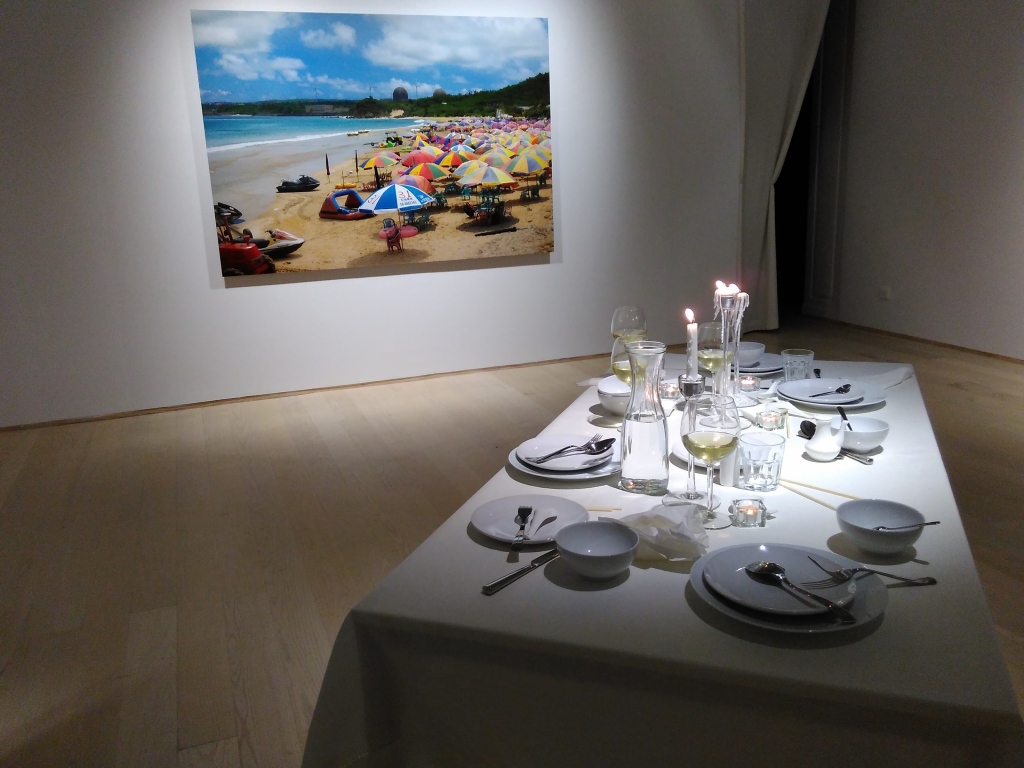
The exhibition was divided into a large screening theatre, an exhibition space with photographs and installation and video monitors.
The screening theatre featured three short video works in a loop: Dwelling (an exploding underwater slo-mo living room), the 562st Hour of Occupation (of the Taiwanese legislative council by student protesters in 2014) and Landscape of Energy (juxtaposing images of a nuclear power station, a beach next to it and abandoned architecture). Except for the Dwelling video (which was static and shot with a high-speed camera), the two other videos featured long camera rides from a high point of view, which one usually associates more with large movie productions than video art works.
The other gallery room displayed two screenshot-prints from the Dwelling video, two single-channel videos that play with the image-stabilization principle (making a moving object on the screen stationary and letting the frame rotate around it), one more slow and meditative video of green foliage, a photograph of a beach without people (but all the traces of their presence) with a nuclear power station looming in the background and lastly a large table with dishes and cutlery that looked very normal, until, every few minutes it made a violent ‘jump’ that made all the gallery spectators jump too.
While the overall theme may have been ‘dwelling’ in order to provide a point of entry for an unfamiliar audience, the expressive power of Yuan Goang Ming’s works is not so much in talking ‘about something’ than in purely expressing a very strange feeling of something that is real yet unreal, the ‘something’ never being directly verbalized. Keeping this mystery is central to Yuan’s work, and it made me describing him to my friends as the “Taiwanese Bill Viola”. Yuan always starts from the real, from his personal experience, yet manages to transform and transcend it in a very special way, inciting at very peculiar feeling in the viewer. At the same time the works are not deconstructive or attempting to display some ‘magical’ effect. They show the world that surrounds us, yet from a viewpoint that opens up a whole new universe.